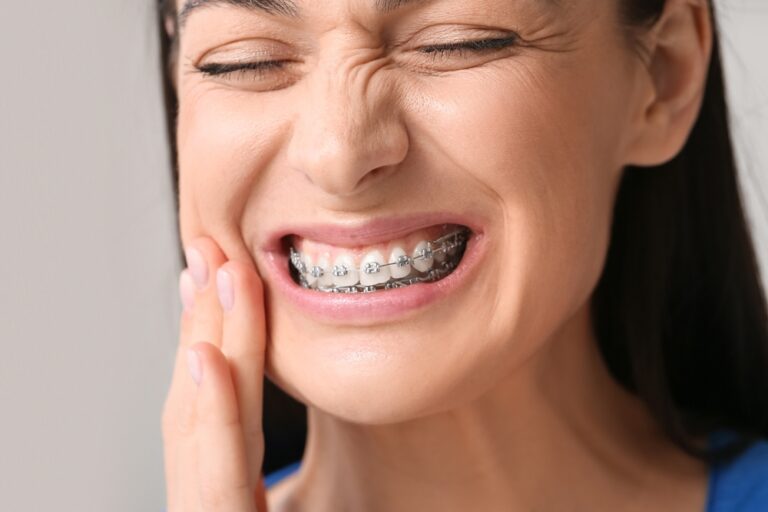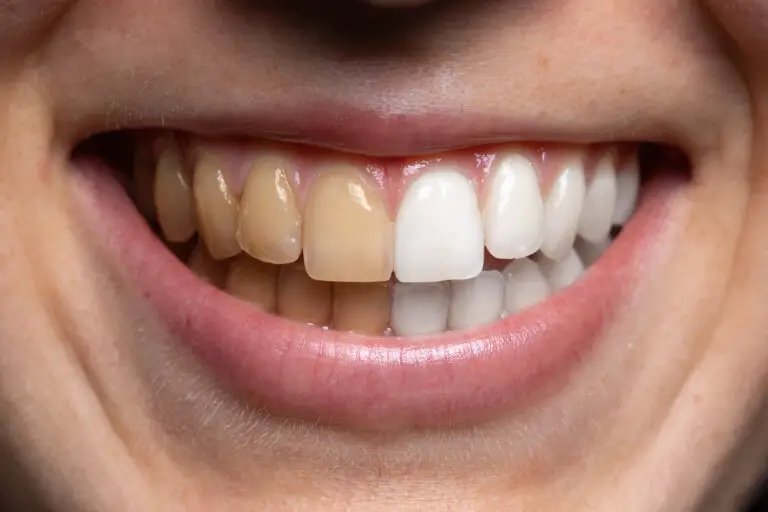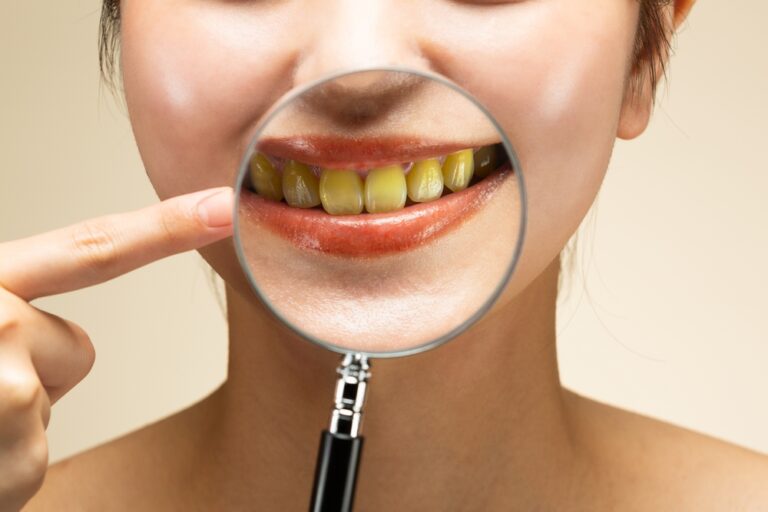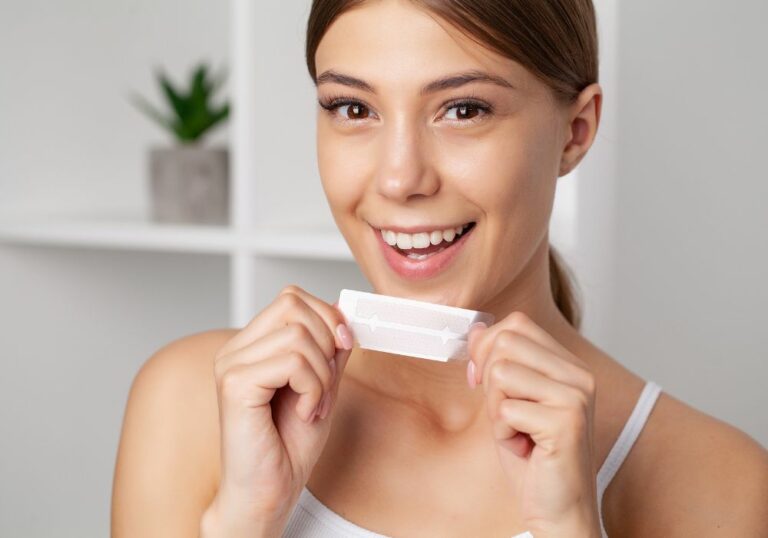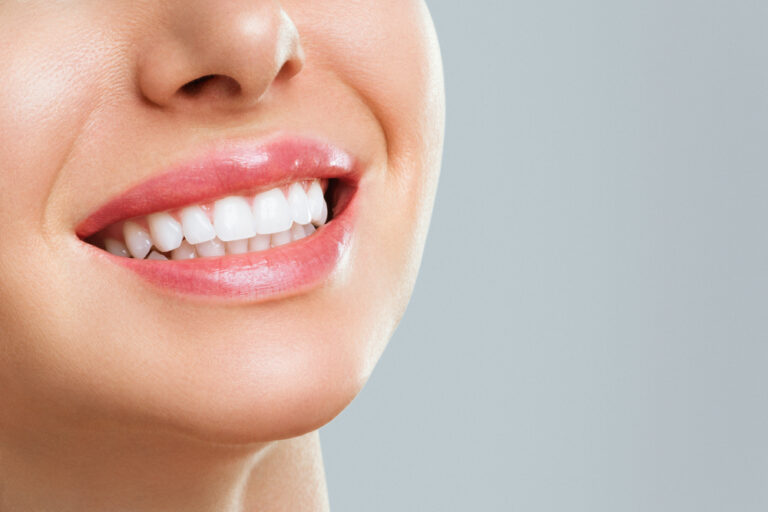Having a bright, white smile is something that many people strive for. Whiter teeth are often considered more attractive and youthful. However, teeth naturally begin to yellow over time due to the aging process and exposure to various staining factors. Although all teeth are susceptible to yellowing, front teeth tend to become more discolored and yellow compared to back teeth. But what causes this difference in tooth yellowing? There are several reasons why certain teeth end up more yellow than others.
How teeth become yellow?
Before examining why front vs back teeth yellow differently, it’s helpful to understand how teeth become yellow and discolored in the first place. There are many factors that contribute to tooth yellowing over time.
1. Enamel thinning
The enamel is the hard, protective outer layer of a tooth. It’s actually translucent and has a light blue hue when viewed from certain angles. As we age, the enamel naturally starts to thin over time, allowing more of the pale yellow shade of the dentin underneath to show through. This makes teeth appear more yellow.
2. Dentin changes
Underneath the enamel is a thick layer of dentin, which is bonelike tissue. Dentin has a yellowish/greyish natural shade. As we get older, the dentin gradually darkens and becomes more yellow. This yellowing of the internal tooth structure causes overall discoloration.
3. Rough enamel
The enamel surface also becomes slightly more porous and roughened with age. This allows external stains to penetrate deeper and become trapped in the tiny pits and grooves of enamel.
4. Plaque buildup
Plaque is a sticky film of bacteria that constantly forms on teeth. When left on teeth for too long, this plaque hardens into tartar. Both plaque and calculus can cause yellowish discoloration around the gumline or where teeth touch.
5. External stains
Foods, drinks, tobacco, and poor hygiene habits expose teeth to staining substances like tannins, acids, and chromogens that cause surface discoloration:
- Coffee, tea, red wine – contain tannins that attach to enamel.
- Berries, tomato sauce, soda – contain acids that erode enamel.
- Curries, soy sauce, ketchup – contain staining chromogens.
- Tobacco – contains multiple toxins that stain teeth.
- Poor brushing – allows stains to build up and penetrate deeper.
6. Fluorosis
Consuming excessive fluoride during teeth development can cause a condition called fluorosis. This results in permanent white specks and streaks that look unsightly.
7. Trauma
Injuries to teeth during childhood can damage the inner tooth development and cause yellowing or grey discoloration later on.
Why front teeth are more prone to yellowing
With many possible ways for teeth to become discolored, you may wonder why the front teeth tend to yellow the most. There are several structural and positional factors that make the front teeth more vulnerable and susceptible to yellowing influences:
1. Thinner enamel
The enamel layer on front teeth is thinner compared to the back teeth. This means the yellowy dentin shows through more easily.
2. Smaller roots
The front incisors and canines usually only have a single root, whereas molars can have up to 3 roots. More roots allow the back teeth to have a greater surface area to obtain nutrients and minerals through the blood supply. This extra nourishment may help back teeth better maintain their enamel.
3. Greater visibility
The prominent front tooth position exposes them to more staining. Back teeth are partially protected by lips, cheeks, and tongue.
4. Reduced saliva
Less saliva reaches the front teeth, so they have less of the protective mineralizing and cleansing effects. The increased saliva flow around back teeth may protect them more.
5. More prone to wear
Chewing patterns and bites tend to place more pressure and wear on front teeth. This accelerates thinning of the enamel layer.
The combination of these factors makes front teeth the most susceptible to yellowing. But back teeth will also eventually yellow over time, just at a slower rate in most people. Next, we’ll look closer at the various causes of yellowing and how they affect different teeth.
Factors that influence tooth yellowing
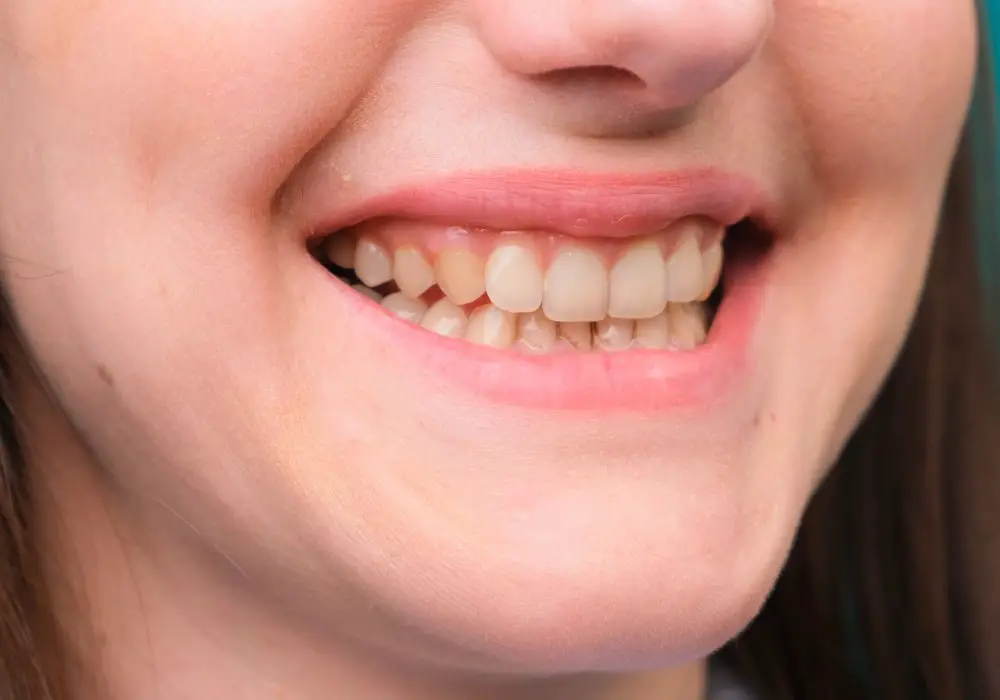
Many factors can accelerate or worsen the yellowing process over time. Understanding these key influences can help you prevent and reduce tooth discoloration.
1. Age
As we naturally age, the outer enamel layer of our teeth becomes thinner, allowing the yellower dentin underneath to show through more. Teeth also become slightly more porous, which can lead to deeper staining. According to a study in the Journal of Prosthodontics, teeth generally darken slightly in shade with each decade of aging.
Age-related enamel thinning and yellowing can affect all teeth. But since the enamel is already thinner on front teeth, the aging effects show up more noticeably on the front incisors and canines. The thicker molar enamel better resists staining and yellowing from age.
2. Genetics
Some people are just born with thinner enamel or softer teeth due to genetic factors. So their teeth are naturally more vulnerable and prone to yellowing influences.
There also appears to be some genetically determined variability in the hardness and mineralization of enamel that can influence long-term color. So if your parents had yellow teeth, you may be predisposed as well.
Furthermore, ethnicity can play a role. For example, those of Asian ancestry tend to have a thicker enamel layer than those of European descent. Thicker enamel means better protection against yellowing.
3. Gender
According to studies, women’s teeth tend to yellow easier and faster than men’s. Some reasons for this gender difference include:
- Enamel is thinner in women, on average.
- Hormonal fluctuations in women can increase gum inflammation, exposing more yellow dentin at the gumline.
- Pregnancy causes fluctuations in hormone levels, increasing risks.
- Osteoporosis in older women can lead to loss of mineralization in teeth.
These factors make women more prone to age-related thinning of enamel and yellowing with each decade. Proper oral hygiene and healthy habits can help counteract the added gender-related risks.
4. Medications
Certain medications are known to cause tooth discoloration, especially antibiotic tetracyclines taken before age 8 while teeth are still developing. Tetracycline binds to calcium ions when teeth are forming, causing permanent dark band stains.
Other drugs that can discolor teeth as side effects include antihistamines, high blood pressure medications, antipsychotics, and chemotherapy drugs. The teeth darkening effects are seen more on front teeth, which tend to show changes most visibly first. But back teeth are also adversely affected.
5. Oral hygiene habits
Good oral hygiene is important is preventing yellow teeth. Poor brushing and flossing leads to more plaque buildup, which allows stains to penetrate deeper and tartar to form along the gumline.
Front teeth tend to require more precise brushing than back teeth due to their prominence and susceptibility to staining. Insufficient brushing of the front teeth allows for plaque accumulation that is more apt to calcify into unsightly tartar and cause faster yellowing.
6. Smoking and tobacco use
Tobacco smoking or chewing has terribly detrimental effects on tooth color. It causes brownish-yellow tobacco stains, but more importantly, it alters the structure of teeth and accelerates gum recession.
The hundreds of toxins in tobacco degrade and discolor tooth enamel. Tobacco also irritates gums and impacts oral bacteria, leading to increased plaque buildup and teeth yellowing. The yellowing effects of smoking are most pronounced on the visible front teeth.
7. Dietary habits
Frequent consumption of certain staining foods and drinks such as coffee, tea, berry juices, tomato sauce, red wine, soda, and sports drinks can all cause discoloration of enamel over time. The tannins, acids, and chromogens interact with the enamel rods.
Sugary foods also feed the bacteria that form plaque and produce enamel-eroding acids. These staining and acidic diet factors usually affect the front, visible teeth the most noticeably. But over time, the back teeth are also vulnerable to dietary stains.
8. Dry mouth
A chronic dry mouth condition allows more bacteria accumulation in the mouth. Saliva helps wash away stains and also has a remineralizing effect on enamel. Without enough saliva, teeth are more prone to cavities, plaque buildup, and yellowing stains setting in.
The most yellowing from dry mouth occurs around the gumlines and between teeth where saliva doesn’t reach as readily. So front teeth again tend to exhibit the problem earlier, but back teeth are also impacted by a lack of saliva flow.
9. Wearing braces
After wearing fixed orthodontic braces, some people are left with yellowish white spot lesions or streaking of enamel around where the brackets were bonded to teeth. This happens when plaque is allowed to build up around braces.
Insufficient brushing and cleaning when wearing braces promotes more decay and stains. Again, the prominent front teeth tend to show the greatest discoloration from braces. But the back bonding sites are also vulnerable to yellowing issues.
Prevention and treatment methods
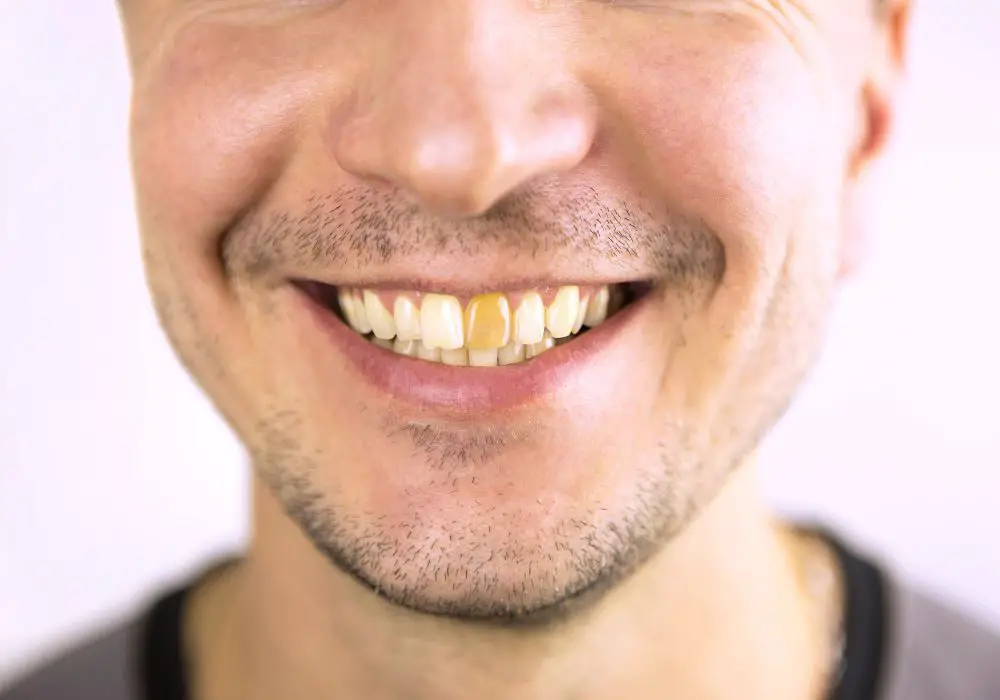
If you want to prevent tooth yellowing or lighten existing yellowness, focus on these tips:
Proper brushing technique
- Brush teeth thoroughly twice a day for 2 minutes each time.
- Focus especially on the visible outer surfaces of the front top and bottom teeth.
- Use a soft-bristled toothbrush and fluoride toothpaste.
- Avoid brushing too vigorously, which can wear down enamel.
- Angle brush towards gums to clean plaque from gumlines.
- Replace your toothbrush every 3-4 months.
Flossing daily
- Floss at least once a day, taking extra care when guiding floss between front teeth.
- Floss removes plaque from between teeth that brushing misses.
- Be gentle when flossing to avoid injuring gums, which can expose dentin.
Diet considerations
- Drink dark staining beverages like coffee through a straw to minimize contact with front teeth.
- Rinse mouth with water after consuming acidic drinks or foods.
- Limit intake of sugary foods that feed plaque-producing bacteria.
- Avoid excessive exposure to strongly colored foods like tomato sauce, soy sauce, or curries.
Stop smoking
- Cease using any tobacco products to avoid their proven yellowing effects on enamel.
- Smoking also irritates gums and reduces saliva flow, worsening tooth discoloration.
Over-the-counter whitening
- Whitening toothpastes with mild abrasives help scrub away some surface stains on enamel, especially on front teeth.
- Peroxide-based whitening strips and custom trays can gradually lighten teeth over several weeks with daily use.
Professional treatments
- Get teeth professionally cleaned at the dentist’s office every 6 months to remove hardened tartar and superficial stains.
- In-office power whitening brightens teeth dramatically in one visit but is more costly.
- Custom-fitted take-home whitening trays from the dentist allow for stronger peroxide gel to safely whiten teeth under supervision.
Other preventive measures
- Use an enamel-strengthening fluoride toothpaste or fluoride rinse daily.
- Chew sugar-free gum to increase saliva flow, which helps prevent decay and wash away food particles.
- Apply dental sealants to protect vulnerable grooves on back teeth.
- Visit the dentist regularly to detect and treat any cavities early before they can cause inner yellowing.
Consistent daily habits of proper brushing, healthy diet, fluoride exposure, and regular dental visits will help keep your teeth whiter and prevent yellowing. But for many people, additional periodic teeth whitening treatments are needed to maintain a bright smile as they age.
Treatments for severe yellowing
Sometimes teeth become severely yellow or discolored due to factors like antibiotics, fluorosis, trauma, infections, or unknown causes. In these situations, professional whitening treatments may not be enough to sufficiently brighten the teeth. Here are some more aggressive options dentists have to treat severe tooth discoloration:
Dental bonding
Bonding improves the appearance of a discolored tooth by applying a thin plastic resin material over the front surface of the tooth. The dentist layers the bonding material and carefully shapes and polishes it. When hardened with a special light, the bonding blends in naturally with the surrounding teeth. This provides an affordable way to mask darkened or stained teeth.
Porcelain veneers
These are custom-made ultra-thin porcelain shells that Bond directly onto the front surface of teeth. Veneers can cover severe discoloration, chips, or irregularities. But some natural tooth enamel needs to be removed to allow space for these thin coverings. Veneers provide a longer-lasting whitening solution but at a higher cost.
Dental crowns
Crowns (or caps) are like a rigid shell that completely encase an entire tooth down past the gumline. This provides the most complete coverage for severely yellow, cracked, or decayed teeth. But it requires shaving down the natural tooth considerably before the artificial crown is placed over it. So this very permanent solution is reserved for substantial tooth defects.
Root canal treatment
If the yellowing occurs due to an infection and decay in the inner pulp of the tooth, a root canal may be necessary. Here the nerve and blood vessels are removed, the tooth interior cleaned out, and sealing materials applied. This can eliminate yellowing originating inside the tooth structure.
In extreme cases of internal tooth trauma or dying nerves, the tooth may darken severely or even turn grey. This advanced internal discoloration requires capping off the tooth nerve with a root canal to prevent further blackening.
Natural remedies
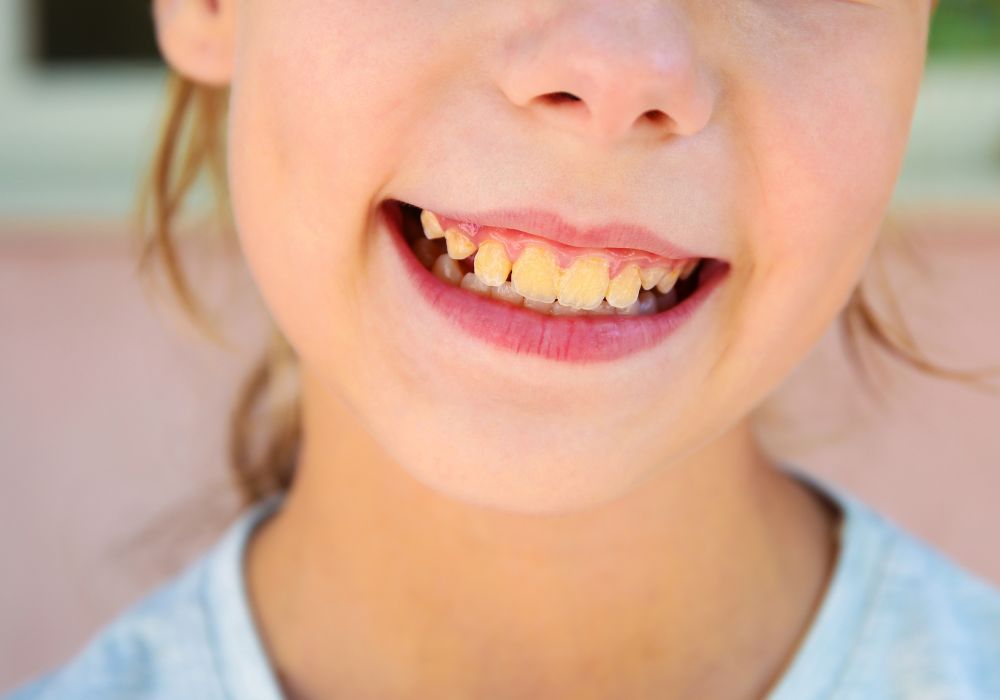
Some people use natural home remedies to try to whiten teeth mildly. These include:
- Baking soda – Has a mild abrasive effect that may help scrub stains. But excessive use can wear down enamel over time.
- Lemon or orange peel – Contains citric acid, which helps remove superficial stains but can also erode enamel.
- Apple cider vinegar – Has a whitening effect on enamel due to acetic acid. But it can damage tooth structure if overused.
- Coconut oil pulling – Swishing oil in the mouth for 15-20 minutes may have a small whitening benefit by removing stains and plaques.
- Strawberries – Contain mild acids that can lift surface stains temporarily. Crushing strawberries and rubbing them on teeth has modest whitening effects.
However, these home remedies only provide mild bleaching of surface stains at best. They work primarily on yellowing deposits on the enamel, not intrinsic tooth discoloration. And excessive use of acidic remedies can damage enamel. For significant whitening, professional dental treatments are still most effective.
Common Questions
Here are answers to some frequently asked questions about tooth yellowing:
Why does teeth whitening cause sensitivity?
Whitening treatments essentially bleach the teeth to lighten color. Peroxide-based whiteners penetrate through the enamel into the dentin, expanding tooth structure slightly. This stimulates nerve endings in the dentin, which we perceive as sensitivity or pain response during and after whitening procedures.
Can coffee staining be reversed?
Yes, with consistent teeth whitening treatments, coffee staining can usually be lightened or reversed over time. However, avoiding further coffee intake will prevent ongoing discoloration. Using a straw to minimize contact with teeth and rinsing after drinking coffee can help reduce staining.
How long do professional whitening treatments last?
In-office power whitening results can last 1-3 years, while take-home whitening trays need to be used periodically for maintenance every 6-12 months. Avoiding staining foods and habits will help extend the results. Teeth naturally yellow again over time.
What are the worst drinks for teeth?
Dark colas, sports drinks, black tea, red wine, and coffee are very staining due to pigments interacting with enamel. Acidic drinks like sodas, juices, and smoothies also erode and roughen enamel, increasing vulnerability to yellowing. Limiting consumption of dark and acidic beverages reduces tooth discoloration.
Can whitening harm enamel?
When used correctly, hydrogen peroxide whitening is generally safe for enamel. However, misusing whitening products excessively can make teeth too sensitive and damage enamel over time. Always follow directions carefully and limit whitening treatments to avoid long-term harm to enamel.
Conclusion
While all teeth are prone to yellowing over time, front teeth tend to become yellow and stained the fastest due to their thinner enamel, smaller roots, weaker nutrition, drier environment, and greater visibility. Staining foods, plaque buildup, acidic erosion, genetics, aging, gender, medications, and habits like smoking also accelerate the discoloration process. Maintaining excellent oral hygiene, getting professional cleanings, following a tooth-friendly diet, and using whitening treatments can help keep your teeth looking brighter longer. But some amount of yellowing is inevitable with age. Severely discolored teeth may require more involved cosmetic solutions such as veneers, crowns or bonding to improve appearance. With the right prevention and treatment plan, you can keep your smile looking whiter and more youthful despite the natural yellowing tendencies.


